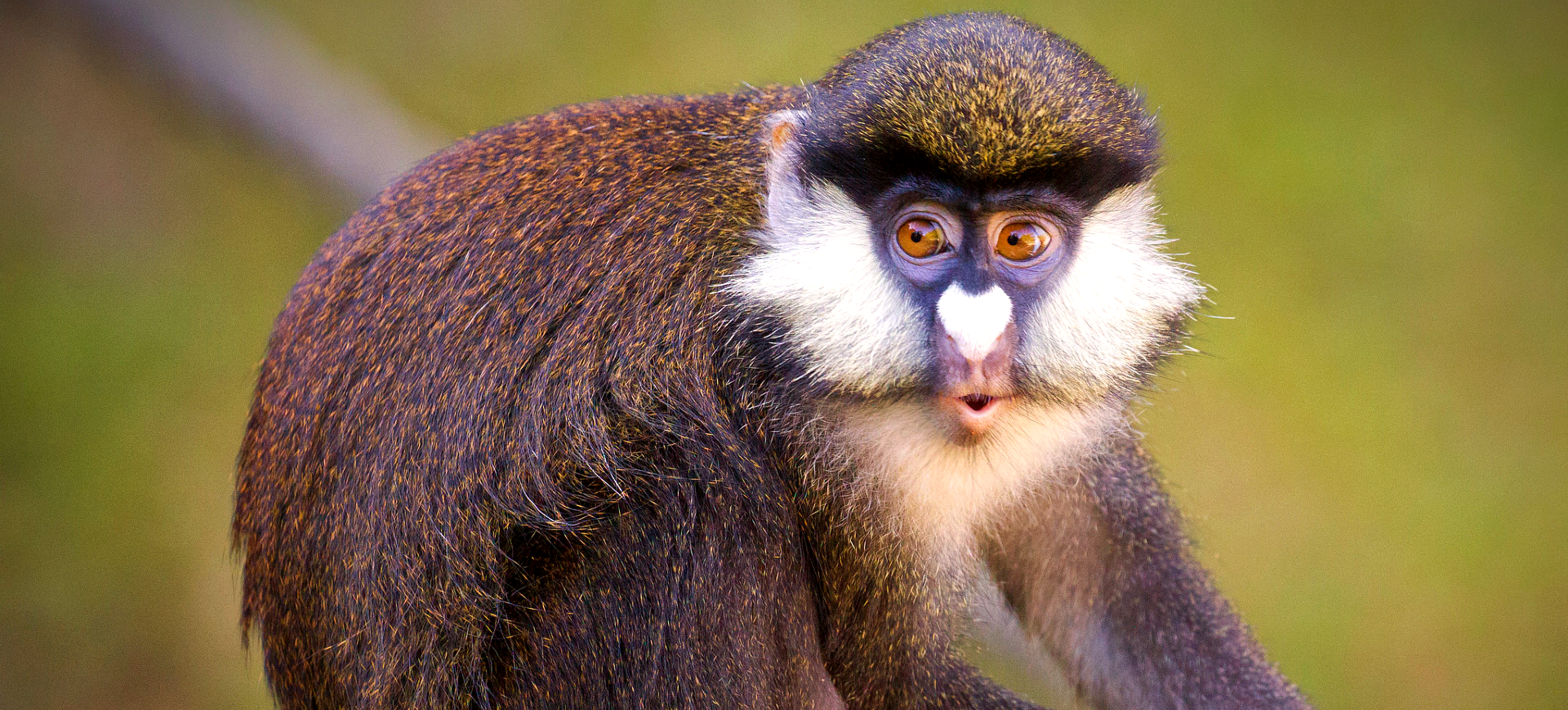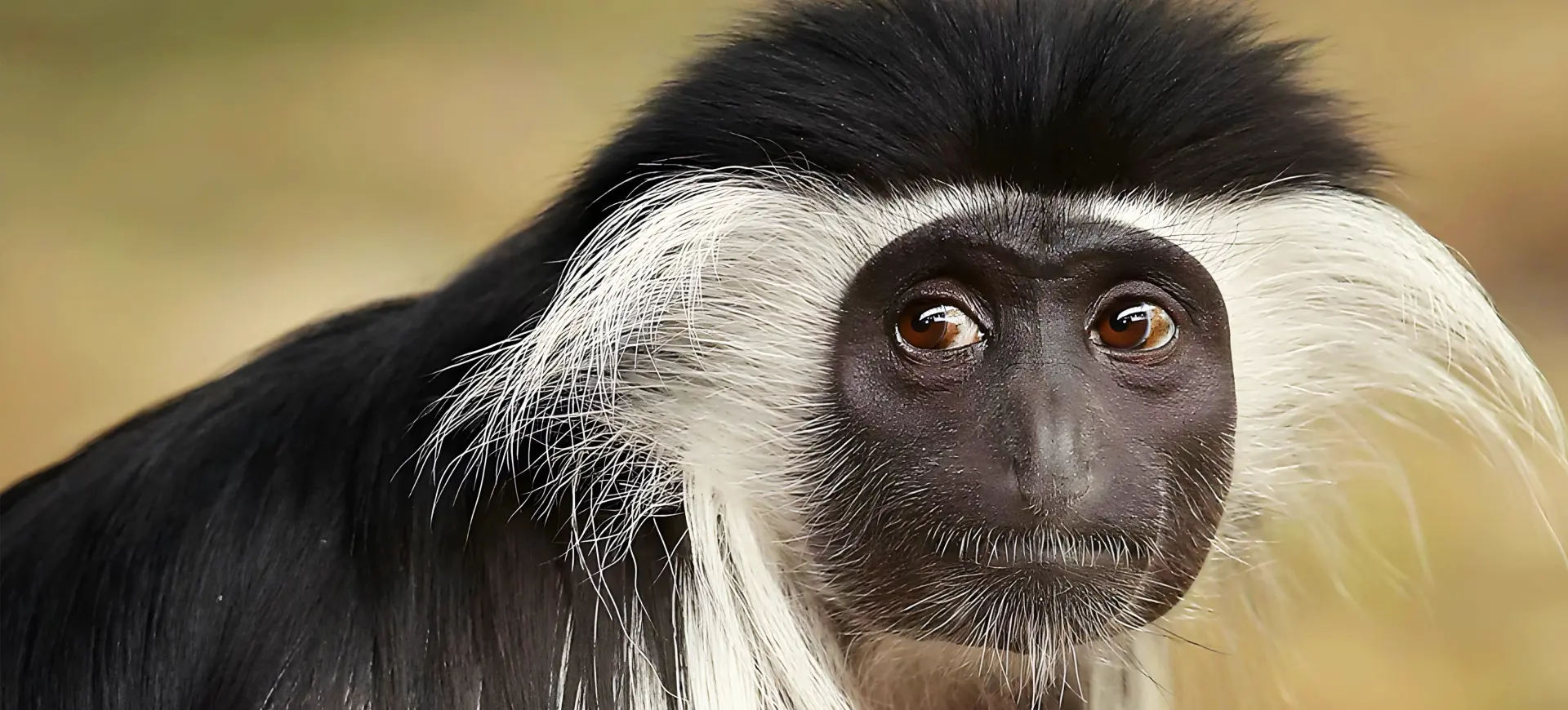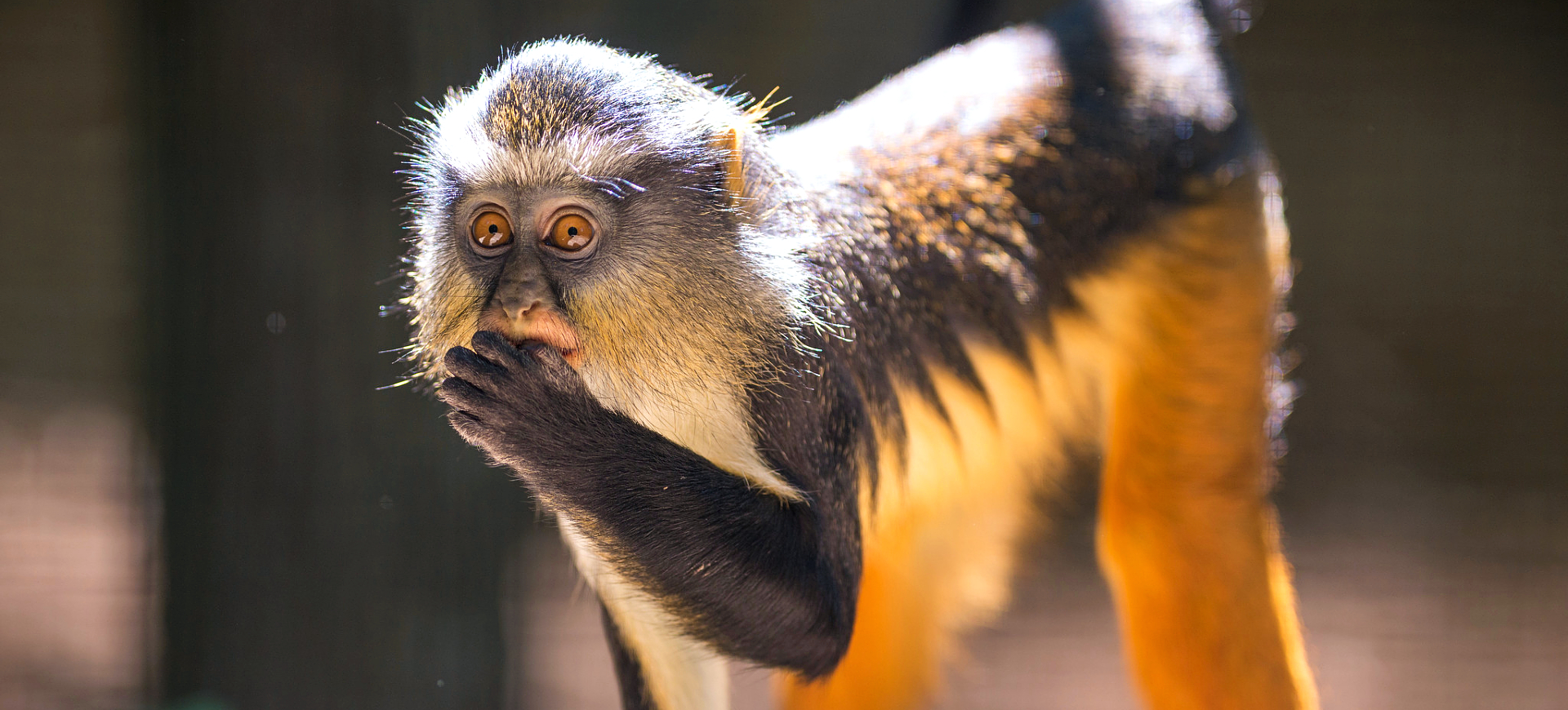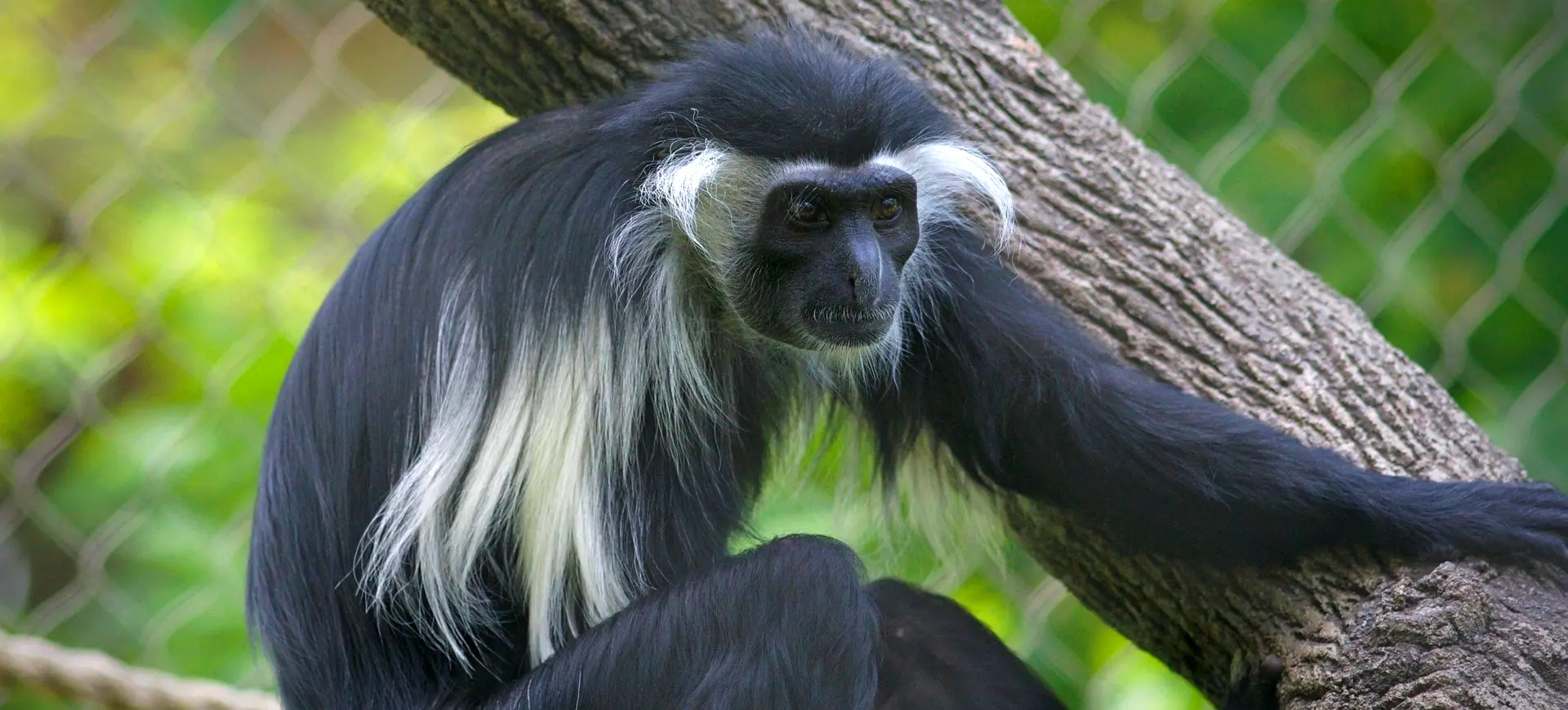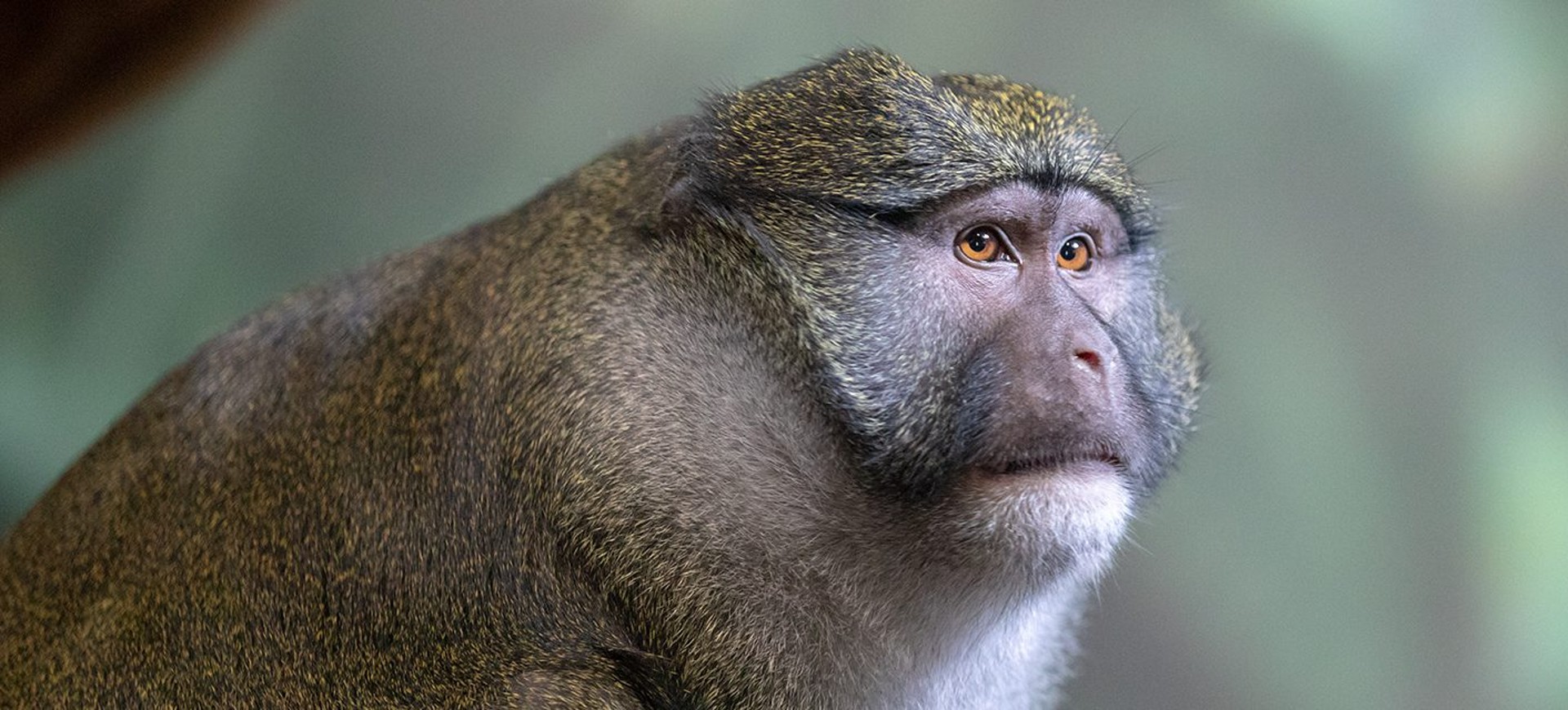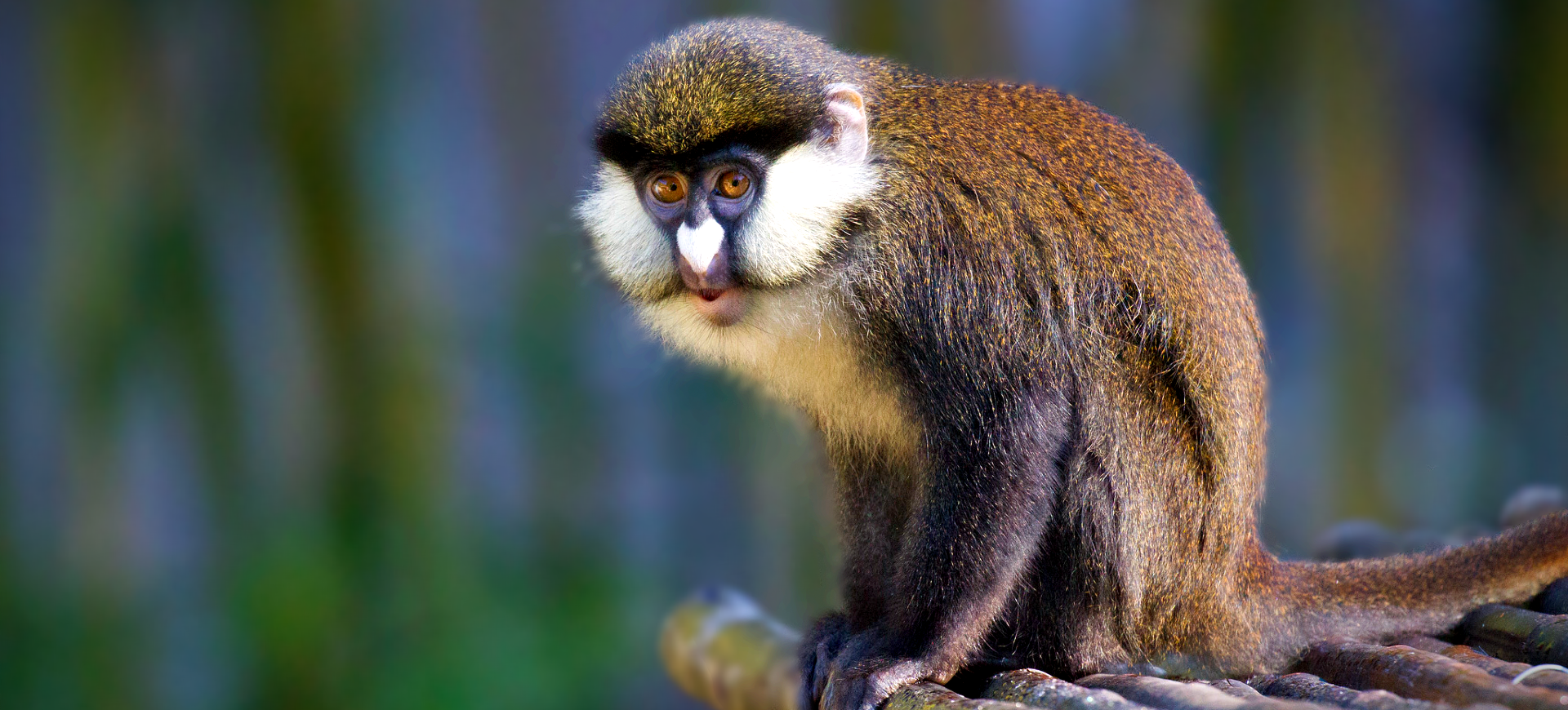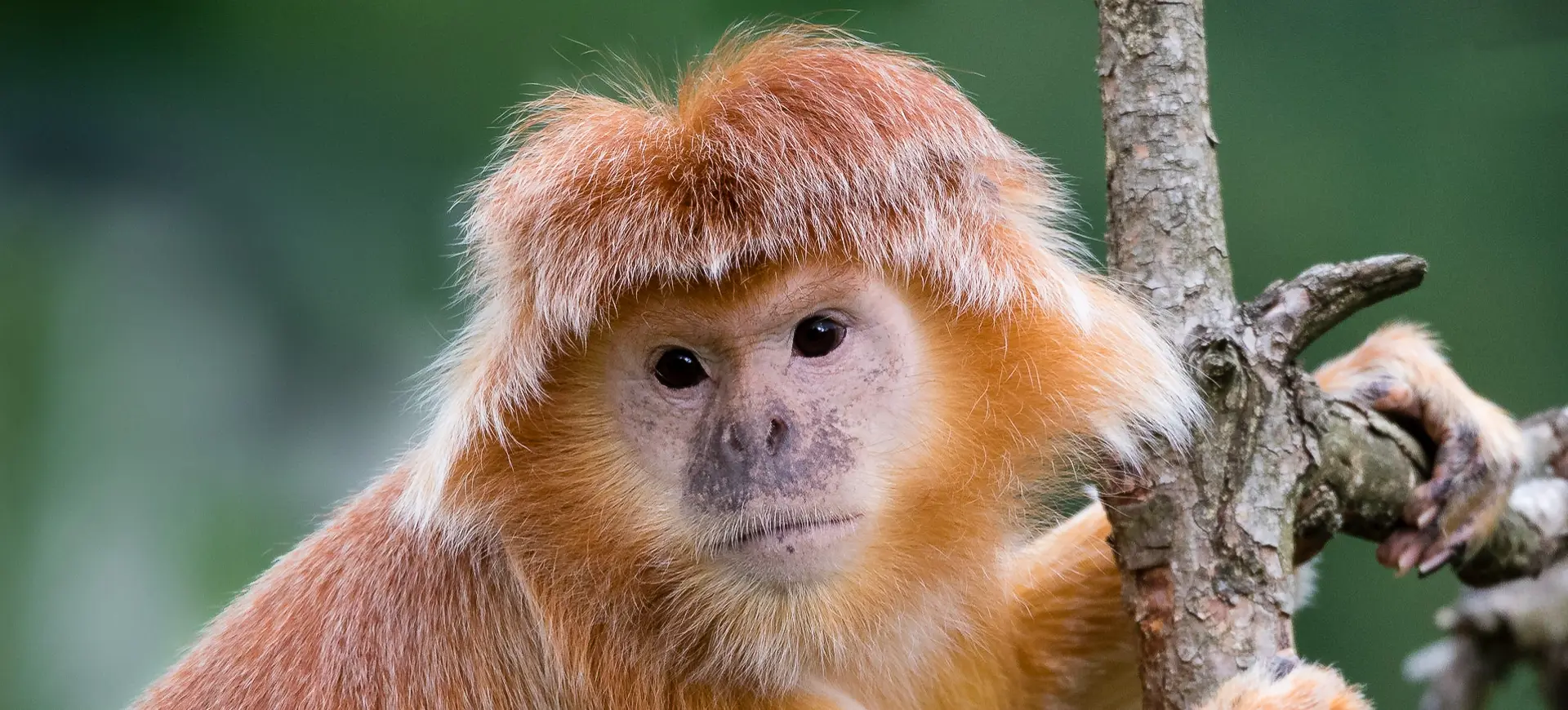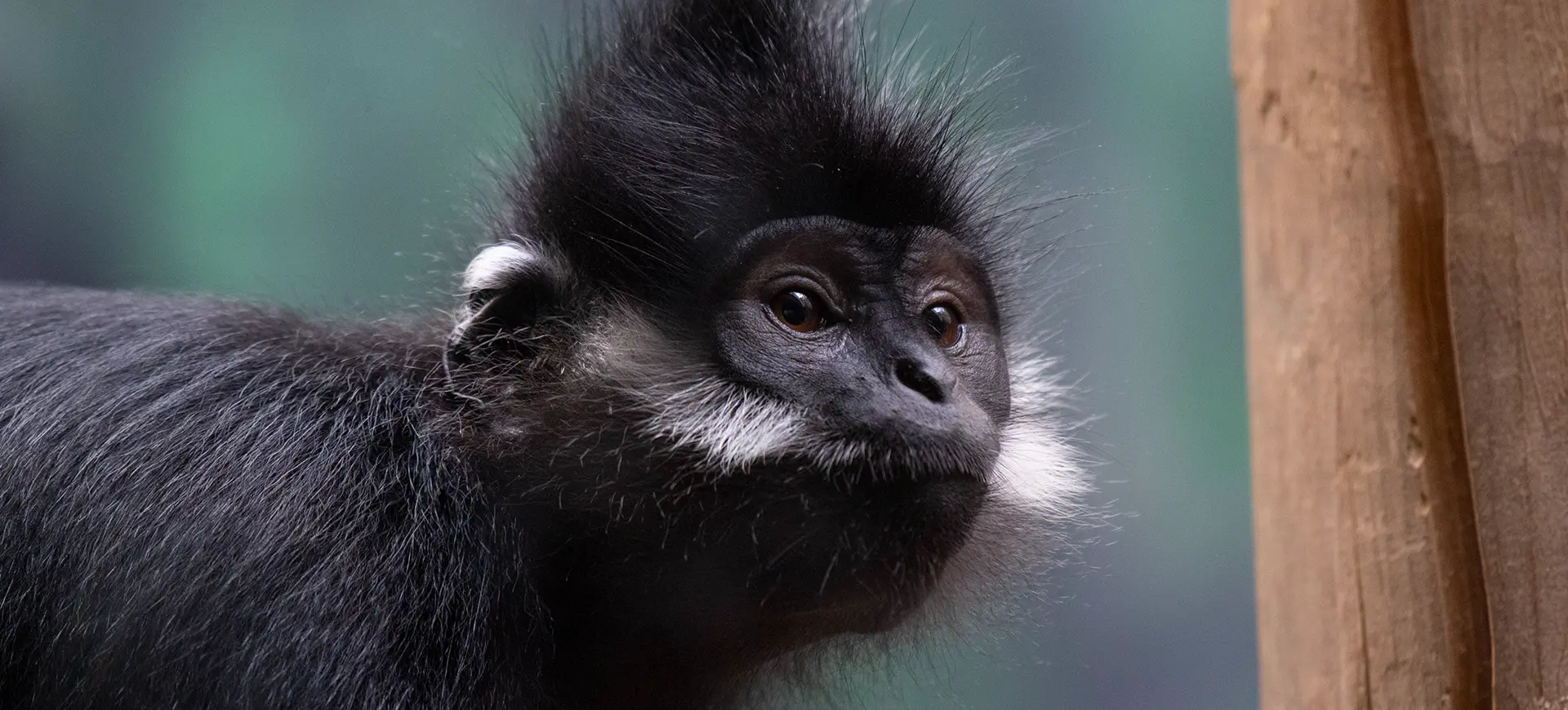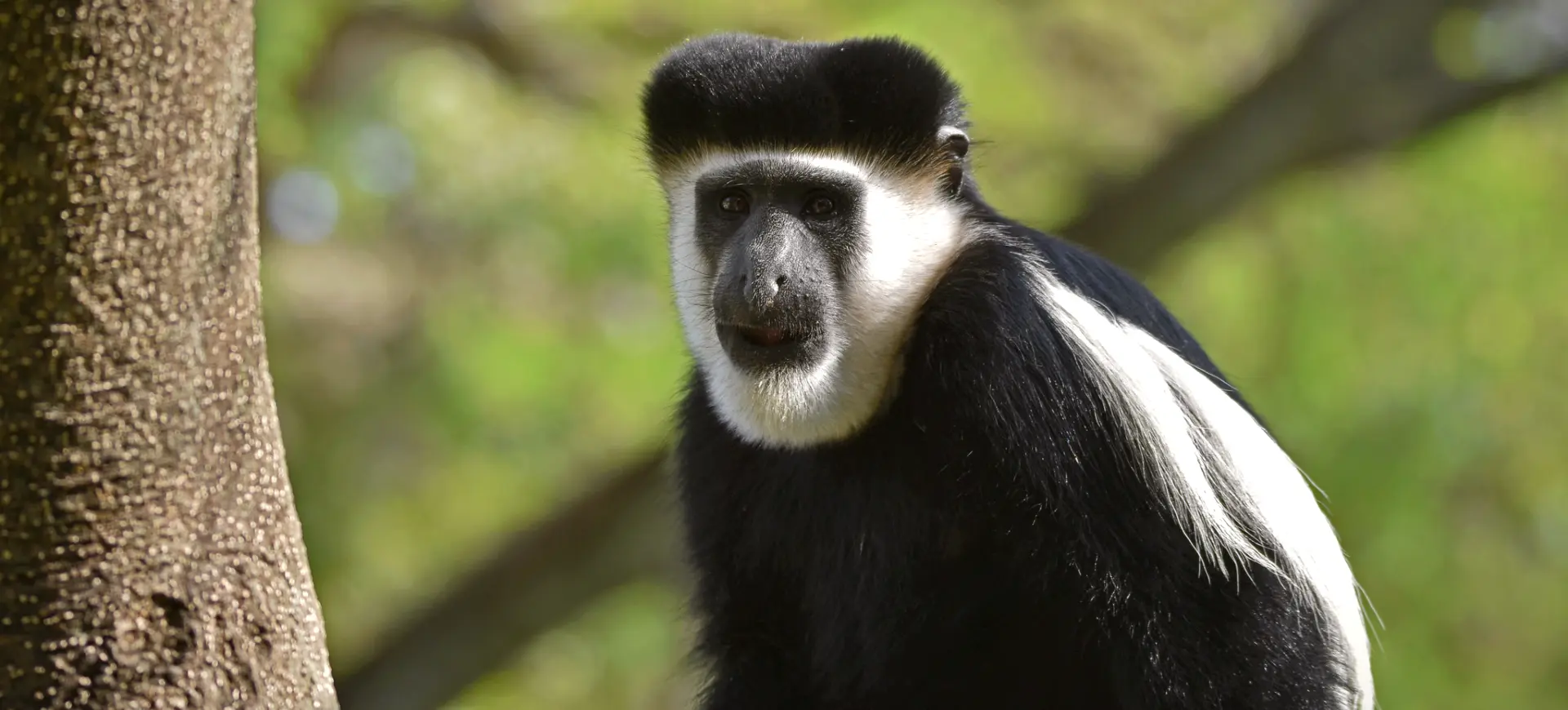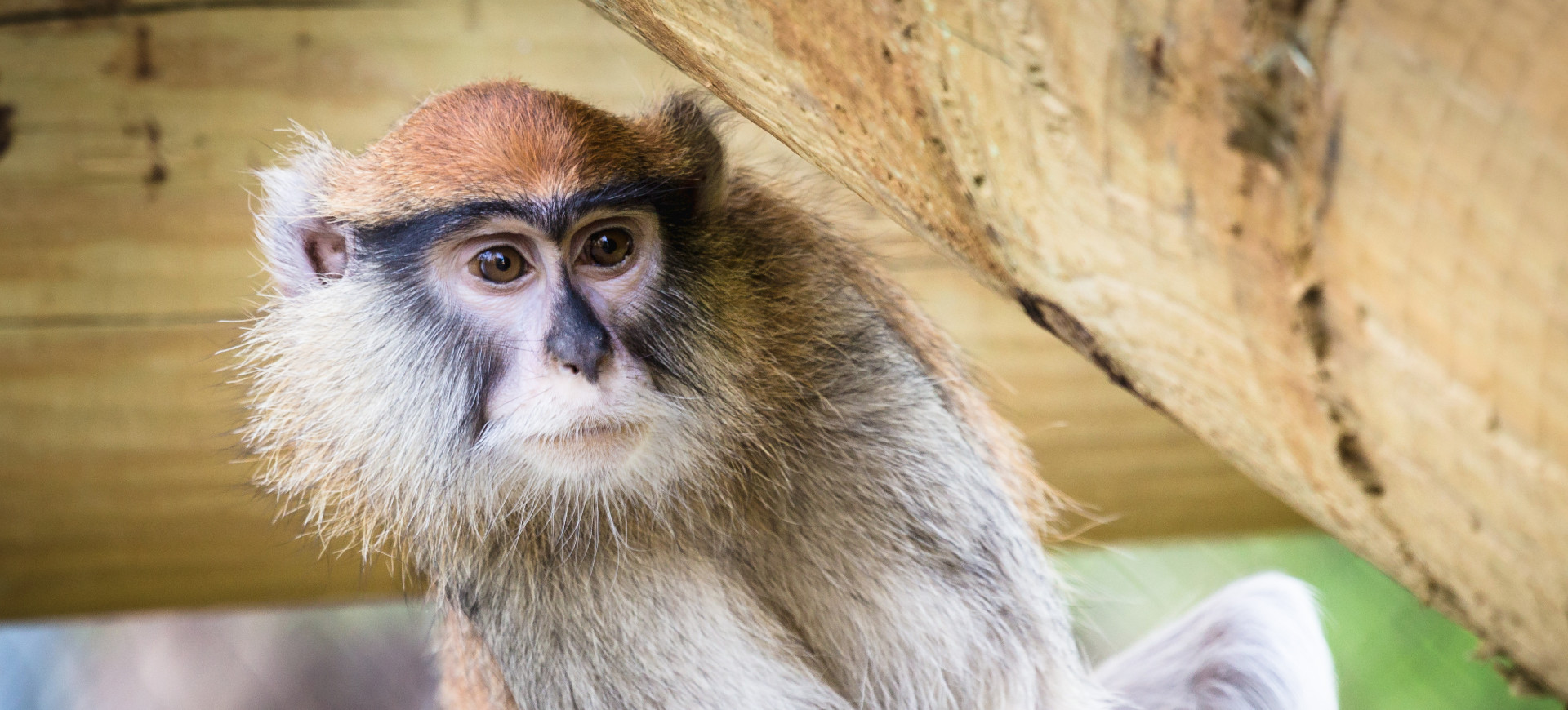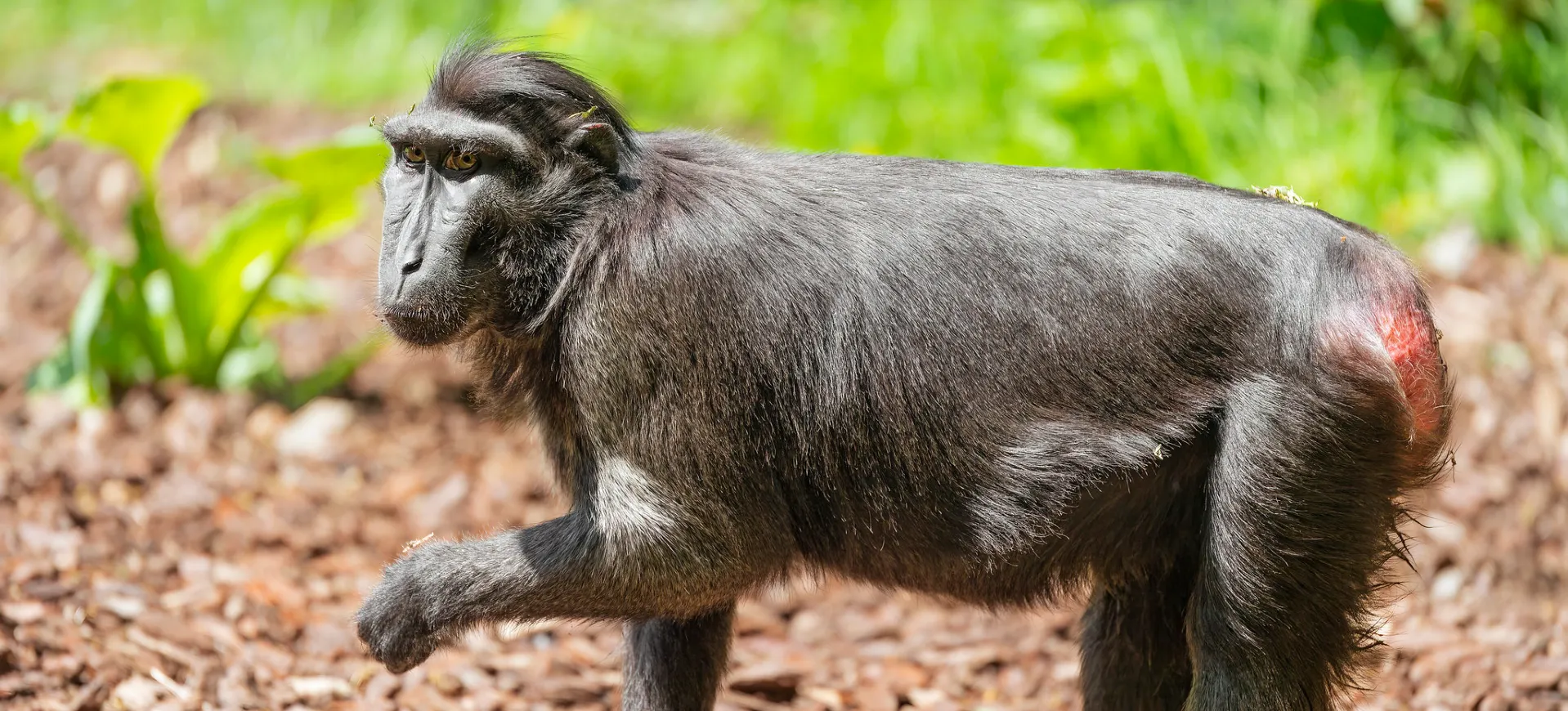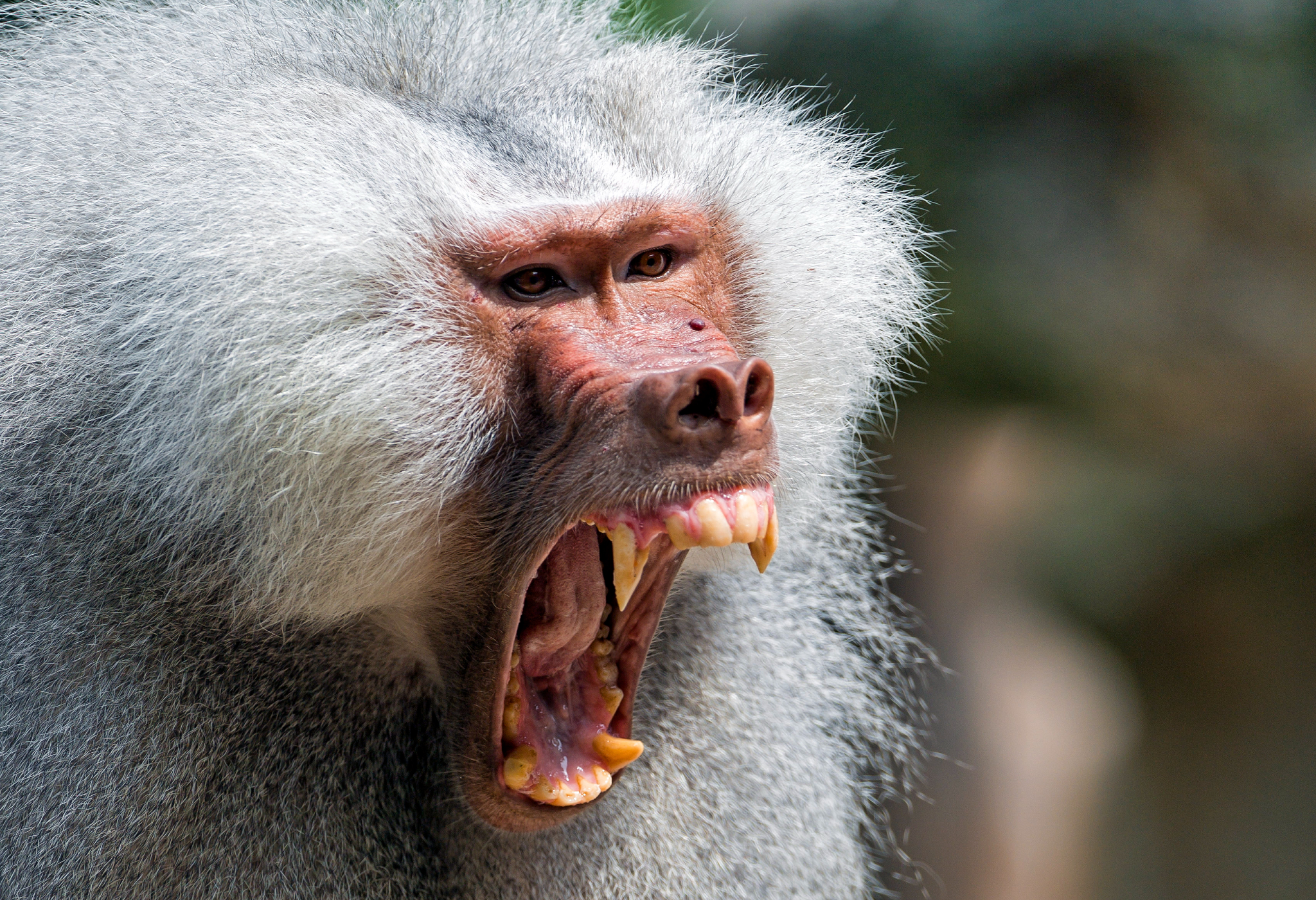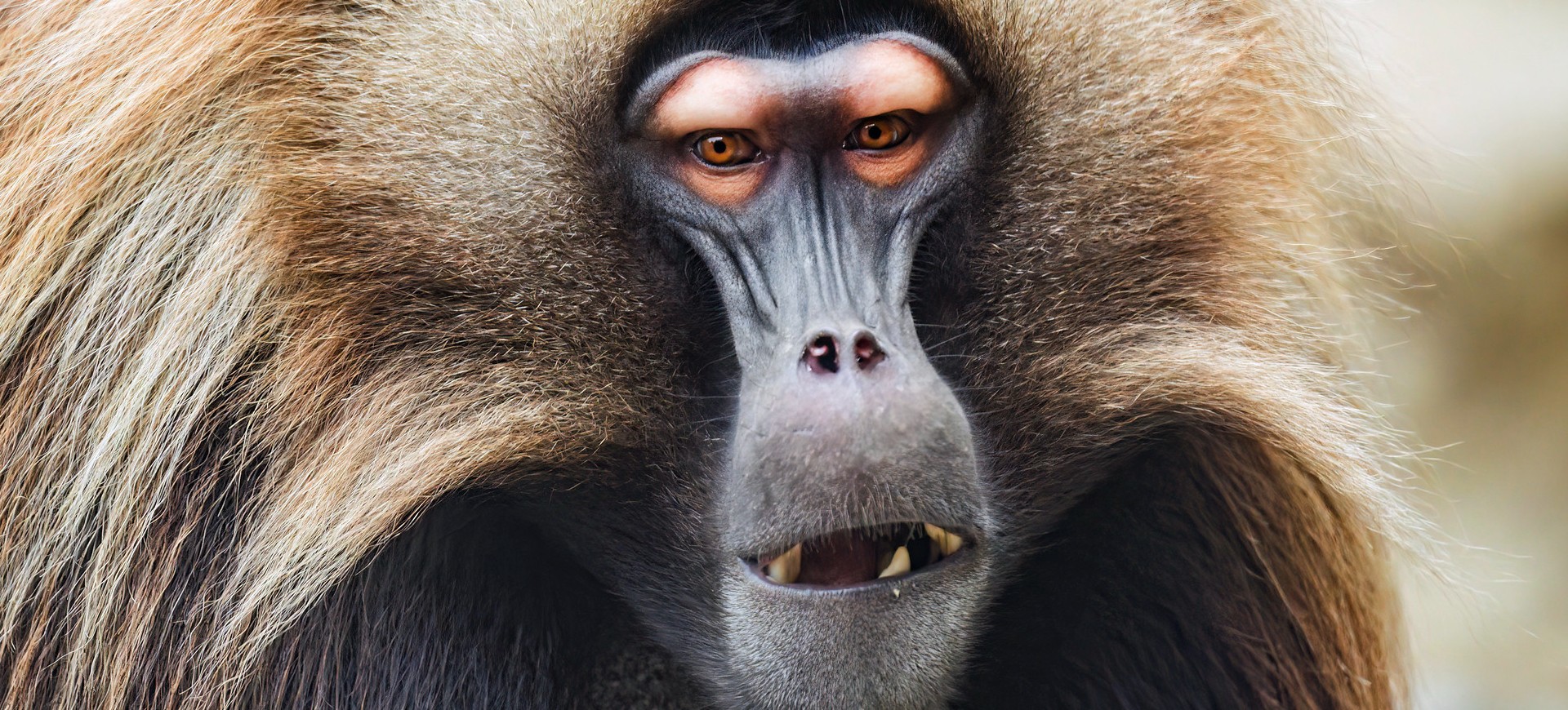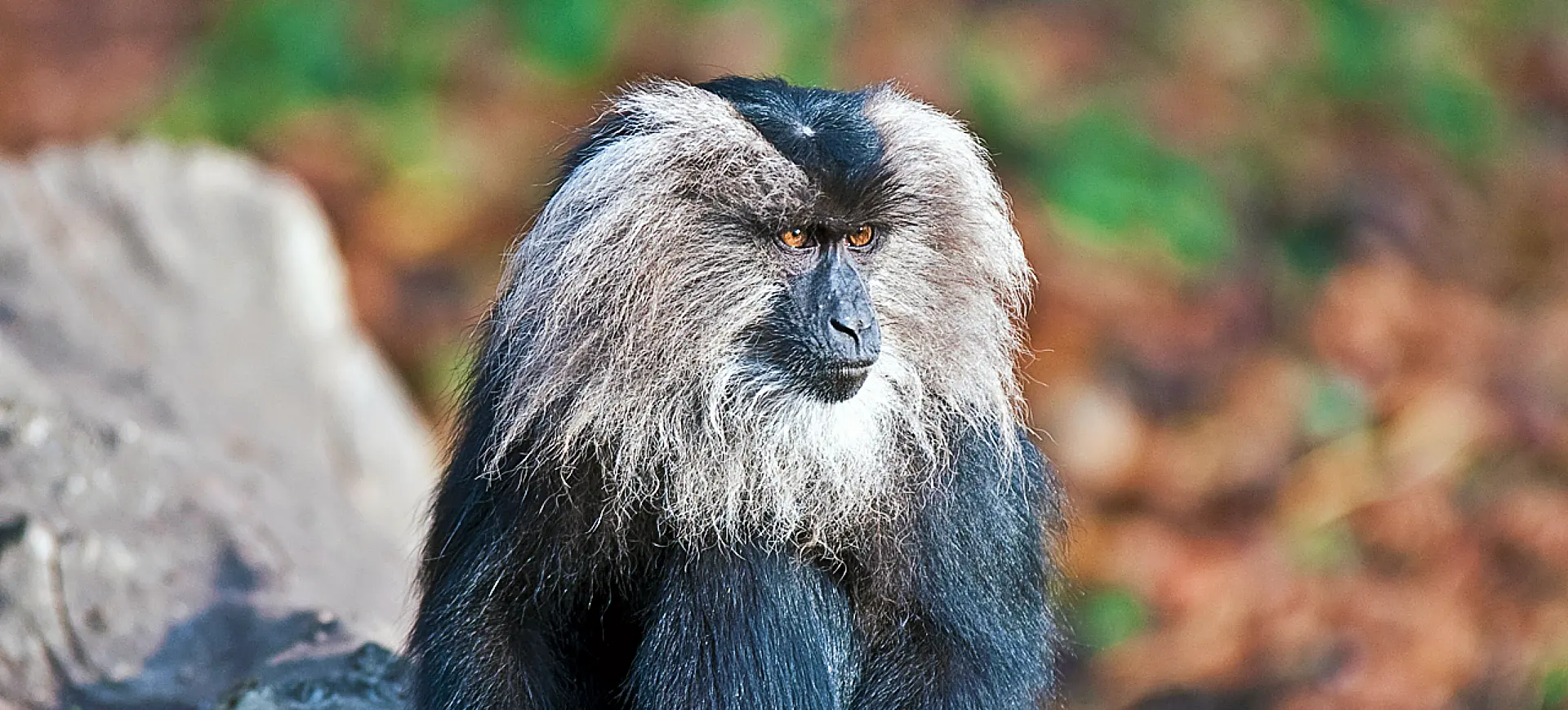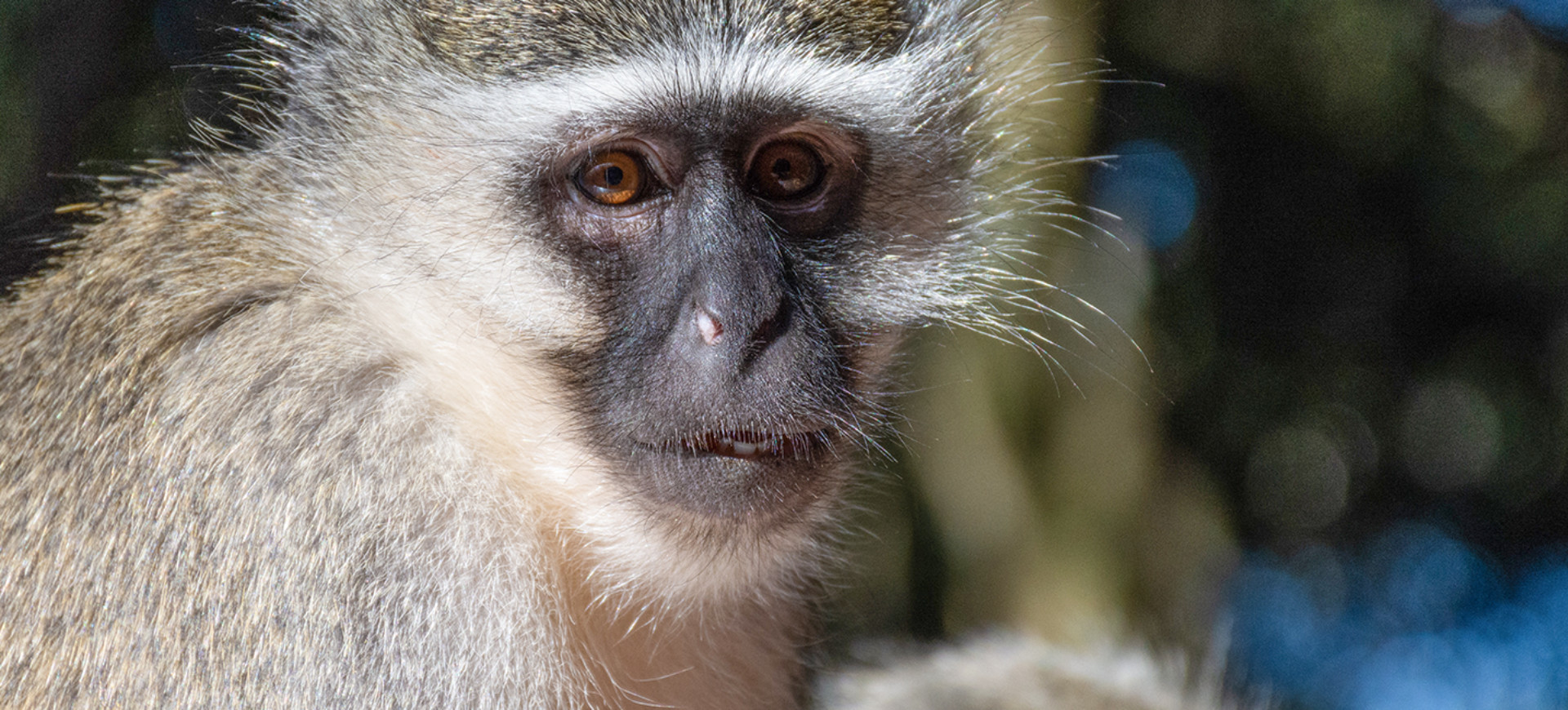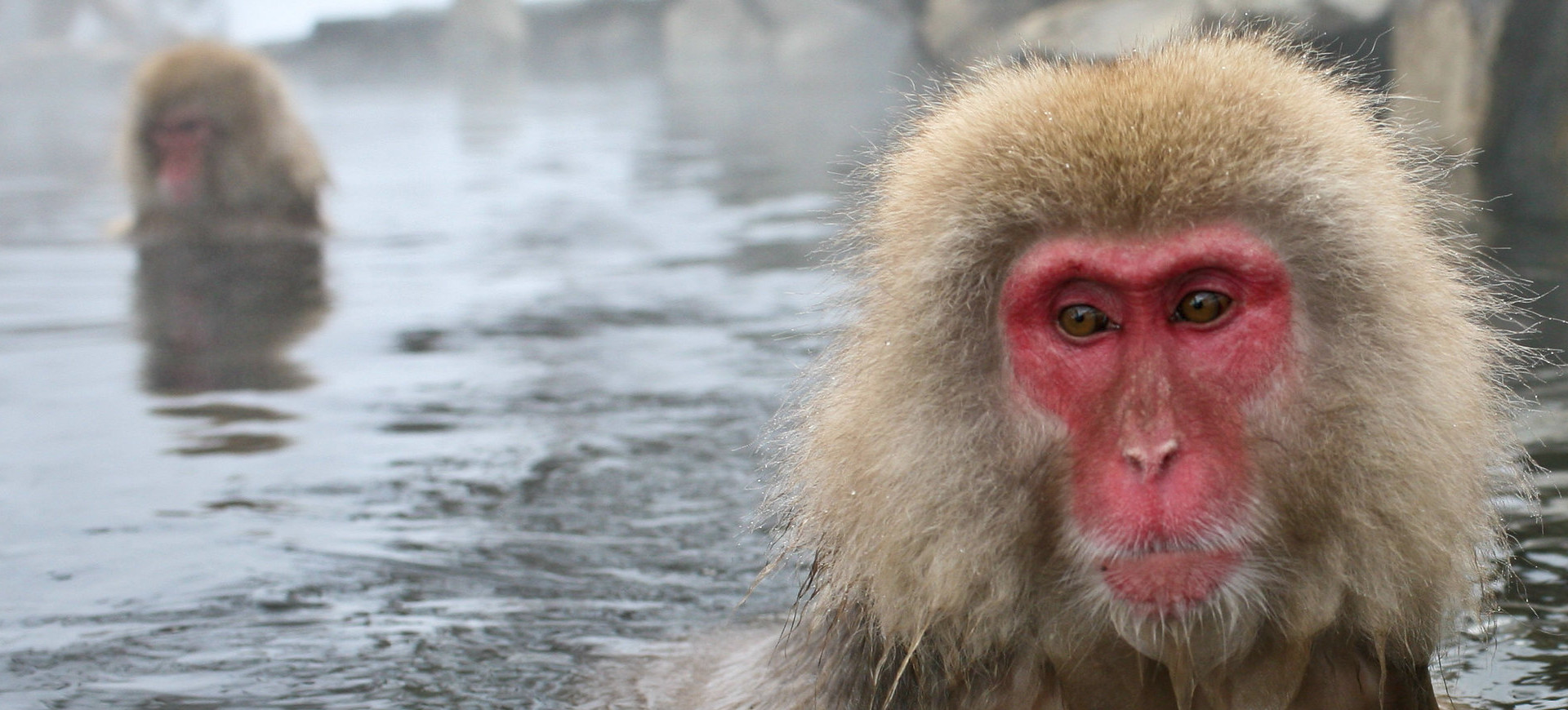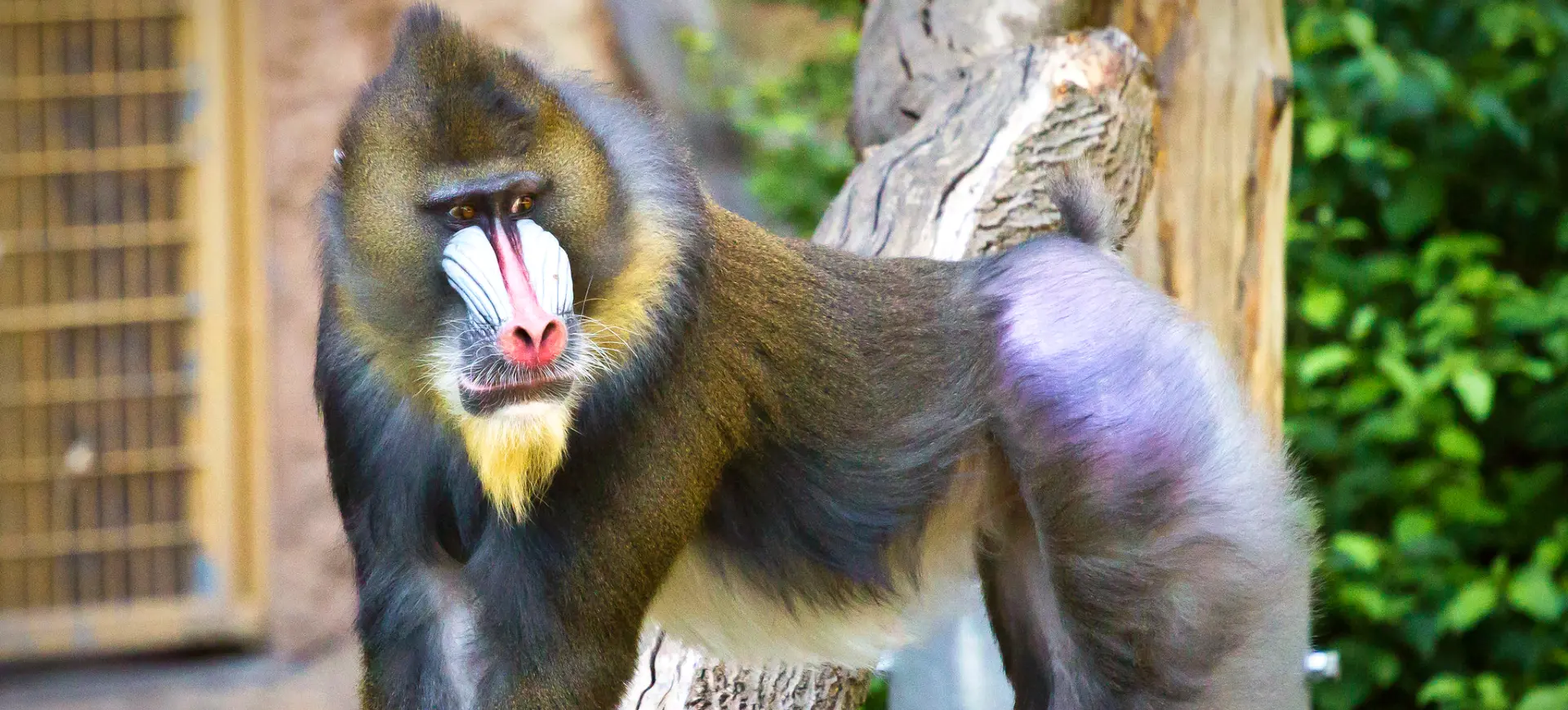Overview
De Brazza’s Monkey, known scientifically as Cercopithecus neglectus, is a distinct Old World monkey native to Central Africa. Named after the French explorer Pierre Savorgnan de Brazza, these primates are recognizable by their striking facial features and coloration. They have a grey agouti coat with a reddish-brown back, white eyelids, a white beard, and an orange crescent-shaped patch on their forehead. These monkeys are medium-sized, with a robust build and a long, tufted tail, which aids in balance when navigating through trees.
De Brazza’s Monkeys are known for their shy and secretive nature, often making them difficult to spot in the wild. They primarily inhabit dense forests near rivers, swamps, and marshlands, offering abundant food sources and food cover from predators. Their diet mainly consists of fruits, seeds, leaves, and small aquatic animals, showcasing their omnivorous feeding habits. These monkeys are adept swimmers, a unique trait among their genus, which they utilize to escape predators or to cross water bodies.
Socially, De Brazza’s Monkeys live in small, stable groups usually led by a dominant male. The group dynamics are relatively peaceful, with minimal aggression displayed between members. Communication within the group is maintained through various vocalizations, facial expressions, and body postures. The social structure plays a crucial role in their survival, aiding in foraging, raising young, and protecting against predators.
Taxonomy
Kingdom
Phylum
Class
Order
Family
Genus
Species
Type
Physical Description:
De Brazza’s Monkey has a distinctive appearance, characterized by a combination of grey, white, and reddish-brown fur. The most notable features are their white eyelids, contrasting sharply with their otherwise dark face, and the orange crescent on their forehead. Males are generally larger than females, a common sexual dimorphism trait in many primate species. The body is covered in a thick coat of fur, which provides insulation and camouflage in their forest habitat.
Their tail is longer than their body, ending in a tuft, which is crucial for maintaining balance in the trees. The hands and feet of De Brazza’s Monkeys are strong and agile, adapted for grasping branches and manipulating food. Their facial structure is unique, with a pronounced muzzle and large cheek pouches for storing food. These physical adaptations are essential for their arboreal lifestyle and foraging habits.

Lifespan: Wild: ~20 years || Captivity: ~30 years

Weight: Male: 15-20 lbs (7-9 kg) || Female: 7-11 lbs (3-5 kg)

Length: Male & Female: Body: 16-25 inches (40-63.5 cm) || Tail: 20-30 inches (50-75 cm)
Characteristic:
Native Habitat:
De Brazza’s Monkeys are found in the dense forest regions of Central Africa, ranging from Cameroon and Angola to Ethiopia. They prefer habitats near water sources, such as riverine forests, swamps, and marshlands. These environments provide them abundant food resources and the necessary cover to hide from predators. The proximity to water is also important for their survival, as it offers additional food sources and a means of escape when threatened.
Their habitat selection is influenced by the availability of food and the presence of dense vegetation for cover. De Brazza’s Monkeys are well-adapted to life in these habitats, with their physical and behavioral traits suited to an arboreal and partially aquatic lifestyle. The conservation of their natural habitats is crucial for the species’ survival, as habitat loss poses a significant threat to their population.
Climate Zones:
Biomes:
WWF Biomes:
Biogeographical Realms:
Continents:
Countries:
Diet:
Diet & Feeding Habits:
De Brazza’s Monkeys are omnivorous, with a diet that includes fruits, seeds, leaves, and various small animals. They prefer fruit, which constitutes a significant part of their diet, but they also consume other plant materials and insects. Their feeding behavior is opportunistic, depending on the availability of food sources in their habitat. They have been observed using their agile hands to extract aquatic prey like crabs from streams and rivers.
Their foraging habits are primarily arboreal but they will also descend to the ground for food. The cheek pouches of De Brazza’s Monkeys allow them to store food and eat it at a safer location, an adaptation that is particularly useful in avoiding predators. They have a complex digestive system capable of processing various plant materials. Seasonal changes in their habitat significantly influence their diet as they adapt to the availability of different food sources throughout the year.
Mating Behavior:
Mating Description:
De Brazza’s Monkeys have a polygynous mating system, with dominant males mating with multiple females. The mating season is not strictly defined and can occur at different times throughout the year, depending on the local conditions. Courtship involves grooming and vocalizations, strengthening social bonds and initiating mating. Male De Brazza’s Monkeys play an active role in protecting the group, which includes safeguarding the females and offspring.
Gestation lasts approximately six months, after which a single offspring is typically born. The mother is the primary caregiver, although other group members may play a role in caring for the young. The offspring are weaned at about six months of age but remain with their mother for several years. The group’s social structure provides a safe environment for the rearing and protection of young monkeys.
Reproduction Season:
Birth Type:
Pregnancy Duration:
Female Name:
Male Name:
Baby Name:
Social Structure Description:
De Brazza’s Monkeys have a complex social structure characterized by small, stable groups typically led by a dominant male. These groups usually consist of several females, their offspring, and occasionally subordinate males. Group cohesion is maintained through grooming, vocalizations, and other social interactions. The dominant male plays a key role in group defense and decision-making, particularly foraging and movement.
The social interactions within the group are important for the development and survival of young monkeys. Learning occurs through observation and imitation, which is essential for acquiring skills needed for foraging and social communication. The social hierarchy within the group helps maintain order and reduce conflicts. Understanding the social behavior of De Brazza’s Monkeys is crucial for their management in both wild and captive environments.
Groups:
Conservation Status:
Population Trend:
De Brazza’s Monkeys are listed as ‘Least Concern’ by the IUCN Redlist, but their populations face challenges. The primary threat to these monkeys is habitat loss due to deforestation, agricultural expansion, and human settlement. Poaching for bushmeat and the pet trade also poses a significant risk in some areas. While exact population numbers are not well-documented, there is a consensus among conservationists that their numbers are declining.
Efforts to conserve De Brazza’s Monkeys focus on habitat protection and anti-poaching measures. Conservationists emphasize the importance of maintaining and restoring their natural habitats, particularly in areas affected by human activities. Education and awareness campaigns are also crucial in reducing the demand for bushmeat and the illegal pet trade. Effective conservation strategies require collaboration between governments, conservation organizations, and local communities.
Population Threats:
De Brazza’s Monkeys face several threats, with habitat destruction being the most significant. Deforestation for timber extraction and agricultural clearing land reduces their natural habitat, leading to population fragmentation. Additionally, hunting for bushmeat and capture for the illegal pet trade are ongoing concerns in some regions. Climate change and its impact on forest ecosystems also pose a potential long-term threat to the species.
Efforts to mitigate these threats include creating and enforcing protected areas, sustainable forestry practices, and strict regulations against hunting and trade. Community-based conservation initiatives are crucial, as they involve local populations in protecting these monkeys and their habitats. Addressing these threats is essential for ensuring the survival of De Brazza’s Monkeys in the wild.
Conservation Efforts:
De Brazza’s Monkeys’ conservation initiatives involve habitat preservation and managing protected areas. This includes monitoring forested areas to prevent illegal logging and encroachment. Anti-poaching patrols and law enforcement are also crucial in areas where hunting is a threat. Conservation programs often involve local communities, educating them about the importance of these primates and encouraging sustainable practices.
In addition to in-situ conservation, there are efforts in ex-situ conservation, including zoo breeding programs. These programs aim to maintain genetic diversity and potentially support future reintroduction into the wild. Ongoing research on their behavior, ecology, and genetics is vital for understanding the species’ needs and implementing effective conservation strategies.
Additional Resources:
Fun Facts
- De Brazza’s Monkeys are excellent swimmers, a rare trait among their genus.
- They can remain motionless for hours, blending into their surroundings to avoid predators.
- The species is named after French explorer Pierre Savorgnan de Brazza.
- Their white beards and orange forehead patches make them one of the most easily identifiable African monkeys.
- De Brazza’s Monkeys use cheek pouches to store food while foraging.
- They are one of the most widespread African forest monkeys, yet remain elusive and hard to observe.
- Infants cling to their mothers’ bellies and later ride on their backs.
- They have a lifespan of up to 22 years in the wild.
- De Brazza’s Monkeys have a varied vocal repertoire for communication within the troop.
- The species is known for its peaceful nature and stable group dynamics.






